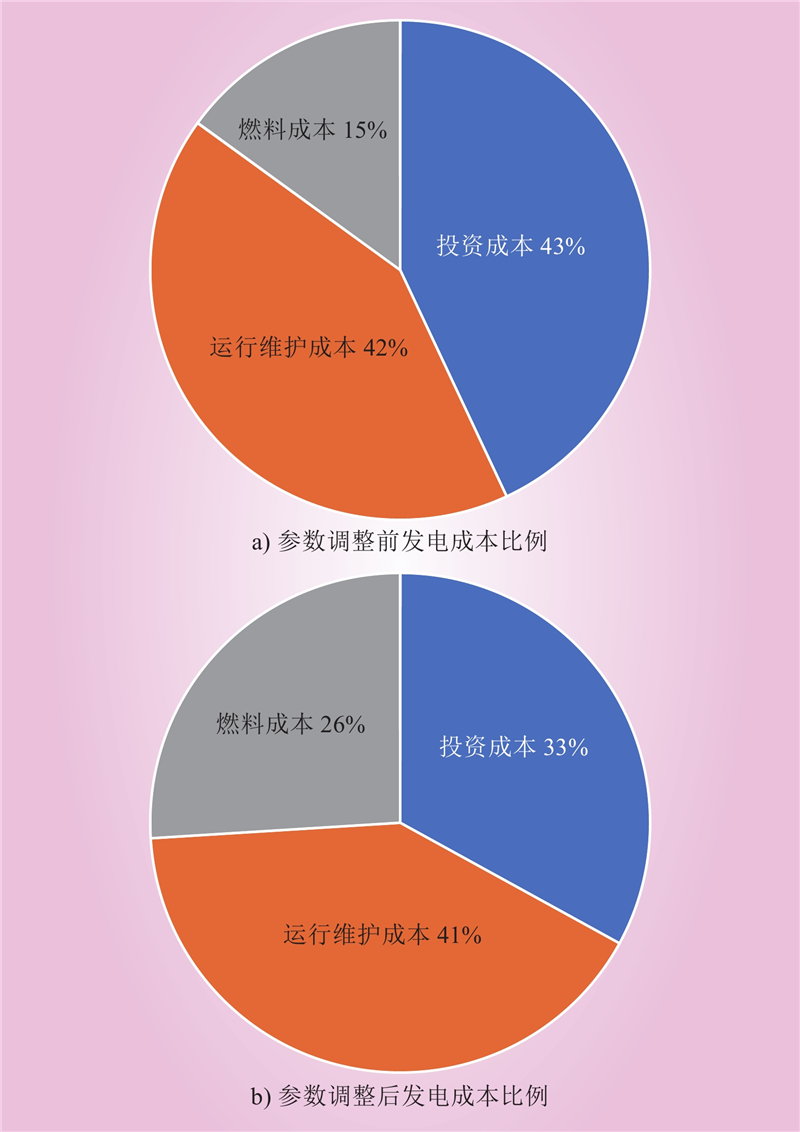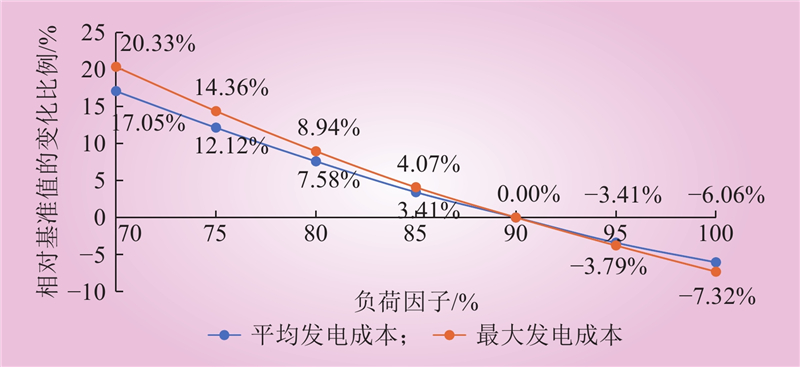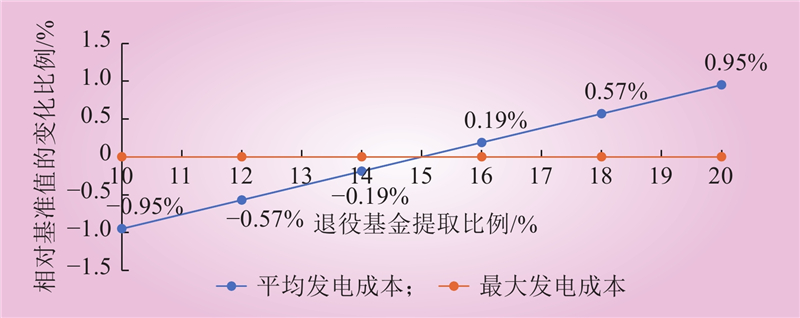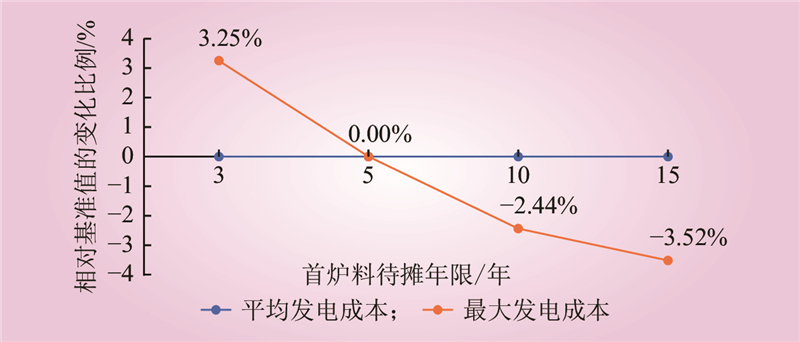| 1 |
袁家海, 张浩楠, 张健. “十四五” 中后期深化电力市场改革的若干思考[J]. 中国电力企业管理, 2023, (7): 42- 45.
|
| 2 |
刘江华, 丁晓明. 核电经济性分析有关问题探讨[J]. 电力技术经济, 2008, 20 (1): 47- 51.
|
|
LIU Jianghua, DING Xiaoming. Study on related issues to the techno-economic analysis of nuclear power[J]. Electric Power Technologic Economics, 2008, 20 (1): 47- 51.
|
| 3 |
核电厂建设项目经济评价方法: NB/T 20048-2011[S]. 北京: 国家能源局, 2011.
|
| 4 |
贾雪凤. 核电项目经济评价与电价测算有关问题研究[J]. 今日财富, 2017, (24): 20.
|
| 5 |
高艳. 核电工程建设项目经济评价规范现状及应对措施[J]. 中国外资, 2012, (6): 133.
|
| 6 |
刘叶志. 基于国民经济评价的我国核电发展思考[J]. 电力学报, 2007, 22 (3): 301- 304.
|
|
LIU Yezhi. A few viewpoints for the development of nuclear power based on the national economy evaluation[J]. Journal of Electric Power, 2007, 22 (3): 301- 304.
|
| 7 |
温鸿钧. “华龙一号” : 核电发展新起点[J]. 中国电业(发电版), 2014(10): 43-46.
|
| 8 |
秦旭映, 胡兴顺, 贾卓. 中国核电厂建设项目工程经济标准对模块式高温气冷堆的适用性分析[J]. 中国经贸导刊(中), 2019, (1): 26- 28.
|
| 9 |
陈会. 核电厂运行的安全性与经济性分析[J]. 产业与科技论坛, 2020, 19 (13): 250- 251.
|
| 10 |
薄美芳, 郑保军, 张弘. OECD核电项目平准化度电成本研究[J]. 工程经济, 2020, 30 (5): 64- 67.
|
|
BO Meifang, ZHENG Baojun, ZHANG Hong. Research on levelised cost of electricity for nuclear power plants of OECD[J]. Engineering Economy, 2020, 30 (5): 64- 67.
|
| 11 |
陈向婷, 郑保军, 赖晓丰, 等. INPRO经济评价方法探究[J]. 价值工程, 2020, 39 (8): 189- 191.
|
|
CHEN Xiangting, ZHENG Baojun, LAI Xiaofeng, et al. Exploration of INPRO economic evaluation[J]. Value Engineering, 2020, 39 (8): 189- 191.
|
| 12 |
谢敏旭. AP1000核电项目经济评价参数研究[J]. 建筑经济, 2022, 43 (S1): 901- 905.
|
|
XIE Minxu. Study on the economic evaluation parameters of AP1000 nuclear power projec[J]. Construction Economy, 2022, 43 (S1): 901- 905.
|
| 13 |
任俊生, 顾军扬, 周志伟, 等. 先进核电站技术综合评价系统的研究[J]. 华东电力, 2005, 33 (12): 46- 49.
|
|
REN Junsheng, GU Junyang, ZHOU Zhiwei, et al. Comprehensive evaluation system for advanced nuclear power plant technology[J]. East China Electric Power, 2005, 33 (12): 46- 49.
|
| 14 |
周法清, 叶丁. 三种堆型核电厂经济性评价[J]. 核动力工程, 1994, 15 (1): 24- 28.
|
|
ZHOU Faqing, YE Ding. The economy comparison among three kind of nuclear reactor[J]. Nuclear Power Engineering, 1994, 15 (1): 24- 28.
|
| 15 |
束红, 陈杰, 刘金朋, 等. 基于电价敏感性分析的AP1000核电站经济性优化策略研究[J]. 华东电力, 2014, 42 (5): 1019- 1022.
|
|
SHU Hong, CHEN Jie, LIU Jinpeng, et al. Economy optimization strategy for AP1000 nuclear power station based on electricity price sensitivity analysis[J]. East China Electric Power, 2014, 42 (5): 1019- 1022.
|
| 16 |
梁国亮. 华龙一号核电工程造价及控制措施研究[J]. 建筑经济, 2017, 38 (3): 66- 68.
|
|
LIANG Guoliang. Research on the cost and control measures of HPR nuclear power engineering[J]. Construction Economy, 2017, 38 (3): 66- 68.
|
| 17 |
王金金. 基于实物期权的福清核电站投资决策分析[D]. 衡阳: 南华大学, 2021.
|
|
WANG Jinjin. Analysis on investment decision of Fuqing nuclear power plant on real options[D]. Hengyang: University of South China, 2021.
|
| 18 |
薛广宇, 冯献灵. 中国核电经济性的特点及提高方法分析[J]. 产业与科技论坛, 2021, 20 (1): 218- 219.
|
| 19 |
徐向梅. 纵深推进电力市场化改革[N]. 经济日报, 2022-08-12(11).
|
| 20 |
张林. “双碳” 背景下的中国核电发展前景研究[J]. 产业与科技论坛, 2022, 21 (24): 18- 20.
|
| 21 |
法丹, 郑保军. “华龙一号” 机组核燃料经济性分析[J]. 中国核电, 2017, 10 (4): 572- 578.
|
|
FA Dan, ZHENG Baojun. The analysis and discussion on the fuel economy for HPR1000[J]. China Nuclear Power, 2017, 10 (4): 572- 578.
|
| 22 |
余红星, 周金满, 冷贵君, 等. “华龙一号” 反应堆堆芯与安全设计研究[J]. 核动力工程, 2019, 40 (1): 1- 7.
|
|
YU Hongxing, ZHOU Jinman, LENG Guijun, et al. General technology features of reactor core and safety systems design of HPR1000[J]. Nuclear Power Engineering, 2019, 40 (1): 1- 7.
|
| 23 |
彭士禄. 核能工业经济分析与评价基础[M]. 北京: 原子能出版社, 1995.
|
| 24 |
胡文培. 我国主要能源发电效益的比较研究[D]. 北京: 华北电力大学, 2011.
|
|
HU Wenpei. The main energy generation benefits comparative study in China[D]. Beijing: North China Electric Power University, 2011.
|
| 25 |
杨海瀛. 浅谈提高核电经济性的方法[J]. 中国外资, 2012, (14): 200.
|









